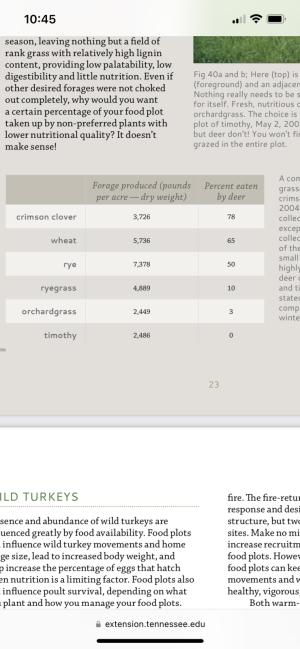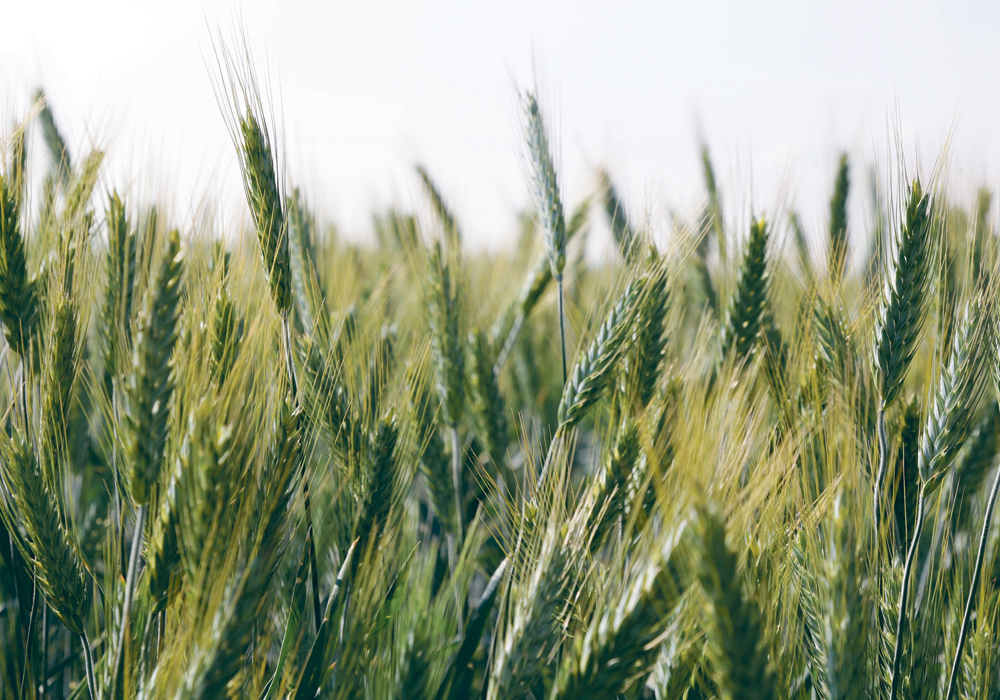paleopoint
5 year old buck +
Point taken on hipchecking the thread away from rye. Mea culpa.
But, WW ...HAD been mentioned. So that's my CYA.
----------------------------------------
I do like this observation: "While there are some differences in cereal grains, they generally all fill the same niche.....specifics may depend on your location, specific methods used, and objectives."
I think that is traction-full. I quite agree. And too, as someone has already observed --- there is this belief that if your soil is thin or poor-ish ----rye is a better choice. Better soil....go with wheat.
Lastly, this query: "Paleopoint, what do you plant your wheat with?"
I broadcast it on ground that has had some sort of summer crop on it that was brushhogged....then I lightly till it in and packed. I do not fertilize my wheat or my rye.
--------------------------------------------------------------
In the past my go-to summer crop has often been buckwheat. But, after this years' experience with grain sorghum I may switch to grain sorghum for my summer 'cover'.
Here's what happened: I had put in a half acre of that sorghum out of curiosity. I had never grown it before. It came in beautifully and gave me a beautiful crop with prolific and big seed heads. (broadcast in on May 19th, with heavy urea application, then lightly tilled, and packed).
So I'm a happy camper throughout August and the first part of September. And then........
.....and then, the deer, turkeys, squirrels, and assorted birds ate it all. In a matter of days.....less than 10-days. All of it.
So much for my winter carry-over for deer.
So now I'm mulling the idea of putting in the sorghum in May......let the critters have it through September then broadcast into it winter wheat or rye around October 1st, then brushhog it, and pack the hell out of it.
At least one half-acre plot is gonna get that experiment in 2023.
But, WW ...HAD been mentioned. So that's my CYA.
----------------------------------------
I do like this observation: "While there are some differences in cereal grains, they generally all fill the same niche.....specifics may depend on your location, specific methods used, and objectives."
I think that is traction-full. I quite agree. And too, as someone has already observed --- there is this belief that if your soil is thin or poor-ish ----rye is a better choice. Better soil....go with wheat.
Lastly, this query: "Paleopoint, what do you plant your wheat with?"
I broadcast it on ground that has had some sort of summer crop on it that was brushhogged....then I lightly till it in and packed. I do not fertilize my wheat or my rye.
--------------------------------------------------------------
In the past my go-to summer crop has often been buckwheat. But, after this years' experience with grain sorghum I may switch to grain sorghum for my summer 'cover'.
Here's what happened: I had put in a half acre of that sorghum out of curiosity. I had never grown it before. It came in beautifully and gave me a beautiful crop with prolific and big seed heads. (broadcast in on May 19th, with heavy urea application, then lightly tilled, and packed).
So I'm a happy camper throughout August and the first part of September. And then........
.....and then, the deer, turkeys, squirrels, and assorted birds ate it all. In a matter of days.....less than 10-days. All of it.
So much for my winter carry-over for deer.
So now I'm mulling the idea of putting in the sorghum in May......let the critters have it through September then broadcast into it winter wheat or rye around October 1st, then brushhog it, and pack the hell out of it.
At least one half-acre plot is gonna get that experiment in 2023.





